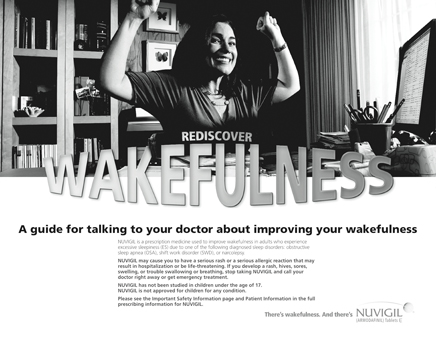Click here to see all of the stories from the 2012 Interactive Guide
Performance-based e-marketing may rival mass-media reach for less money, Marc Iskowitz finds
As anyone working on a pharma brand knows first hand, marketing budgets are getting tighter. Securing resources to run traditional mass-media consumer campaigns is becoming harder, too.
Enter performance-based DTC. Like the traditional media model, these programs cast a wide net, helping marketers reach a large volume of patients. The difference is in how they narrow the size of the net through profiling: first, brands lock directly in with a qualified condition marketing segment; second, the payment structure is aligned with the action that the brand is trying to achieve. That can put promotional dollars to work more efficiently.
Shawn Ferry, senior group director, Wake (CNS) franchise, at Teva’s Cephalon unit, used pay-for-performance (P4P) marketing to help raise awareness of excessive sleepiness, a condition which Cephalon’s flagship brand, Nuvigil, is approved to treat.
The firm that developed and optimized all the creative components for this effort was QualityHealth, with support from DraftFCB, the brand’s consumer AOR. QualityHealth uses upstream media tactics, such as search engine marketing, display and other advertising to bring people to its website. It then serves up content, tailoring communications to where patients are in their journey.

A QualityHealth survey of 3,300 consumers found that, over 55% of the time, they prepare before a doctor visit, with the Internet being the prime health-information source, whether it’s a brand.com, a consumer health site or social media. Over 20% of the time, they ask their physician for a specific brand.
“If we know patients have an upcoming doctor visit, we know they are going to prepare anyway,” says Denise Esakoff, SVP, program performance, QualityHealth. “We’re able to match them to the materials they are looking for to help them most effectively prepare for that conversation.”
In the case of Nuvigil, QualityHealth’s 100% permission-based system screened individuals for those who work non-traditional shifts and are possibly struggling with excessive sleepiness or shift work disorder. At this point, many opted in to receive educational information, vouchers and/or co-pay cards. The client worked with the agency to classify patients as those planning to go to their doctor in the next two weeks vs. those just considering a visit, using different e-mail messaging for both.
Through frequent communication, the firms were able to align the consumer campaign with the HCP visit, so that when the patient went in and had a branded conversation with the physician, Cephalon paid only for those discussions.
From November 2010 to September 2011, back-end analytics show, QualityHealth screened more than seven million people, of which 4.1 million qualified to participate in the Nuvigil program. Of that total, 184,000 saw their physicians, 44,000 got a ‘script and 34,000 of these had the ‘script filled.
Says Ferry, the P4P program lets communications “be more effective and much more efficient given we are communicating with a more targeted audience who has a greater likelihood of action.”
From the February 03, 2012 Issue of MM+M - Medical Marketing and Media








